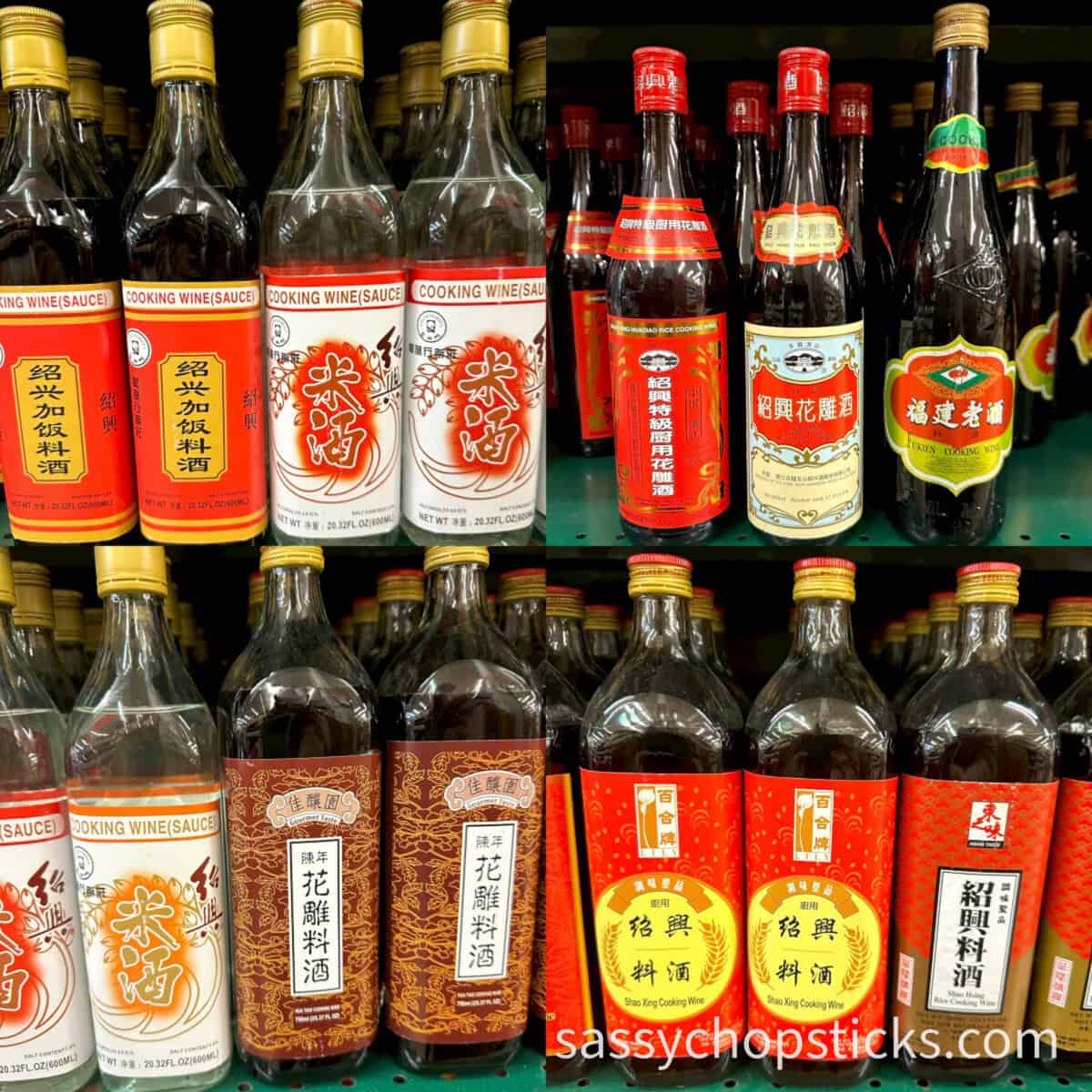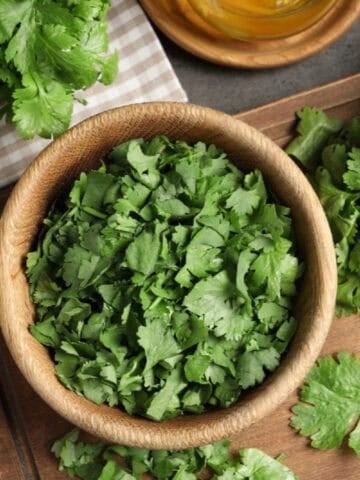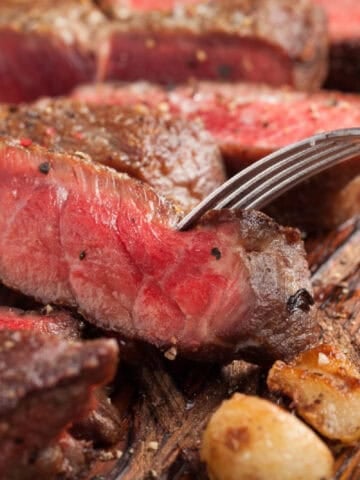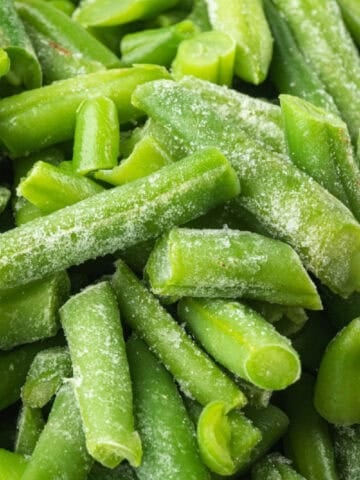Do you happen to know what's the best substitute for Shaoxing wine? Shaoxing rice wine, or Chinese cooking wine, adds a unique flavor and depth to many popular Chinese dishes through its rich yet subtly savory and sweet flavor profile. However, this essential ingredient valued in traditional Chinese cuisine may not always be available in local markets and liquor stores. Some individuals may have dietary restrictions or cultural preferences that discourage the use of alcohol in their cooking. Others may simply not have access to Chinese cooking wine and seek readily available alternatives. Substitutes offer a practical solution to maintain the intended flavors in Chinese dishes.

Jump To
Fortunately, there are excellent substitutes available, both alcoholic and non-alcoholic, that can very effectively mimic Shaoxing wine’s unique taste. Many good options exist to retain a dish’s authentic Chinese flavors even without this type of rice wine. So don’t let its absence limit your cooking; read on to learn about the best Chinese cooking wine alternatives1
Substitutes for Shaoxing wine
Alcoholic substitutes
There are several suitable alcoholic substitutes for Chinese cooking wine. The following are the most popular ones:
Dry sherry
Dry sherry from Spain’s southern region is an excellent replacement for Chinese cooking wine. As a fortified wine, it presents a balance of subtle sweetness and rich complexity, quite similar to the profile of Chinese cooking wine. However, while pale, dry sherry mimics that distinct flavor well, it is also a bit sweeter. This sweetness could make the dish too sugary if you don’t adjust the quantity. So, you should use about half the amount of Chinese wine.
Mirin
Mirin, a sweet glutinous rice wine from Japanese cuisine, is a suitable replacement for Chinese cooking wine. It contributes a pleasant, sweet taste and a rich umami flavor, very similar to what the popular wine imparts. However, because mirin contains more natural sugar, it’s best to modify the amount used compared to a recipe’s original instructions. With this small adjustment, mirin can still nicely mimic the flavor profile the Chinese cooking wine normally provides.
Cooking sake
Cooking sake, another Japanese rice wine is less sweet than mirin but richer in flavor than Chinese cooking wine. Similarly to Chinese cooking wine, it enhances sauces, broths, salad dressings, meat dishes, etc., with greater layers of taste. When using it as a perfect substitute, cooking sake can be substituted in a 1:1 ratio by volume.
Gin
Gin’s unique botanical flavor profile can add an exciting twist to your Asian dishes. It can substitute for Chinese cooking wine in select recipes that require only a modest amount of wine for flavor enhancement. Its robust flavor profile makes it a great alternative when applied sparingly. Gin’s addition satisfyingly enhances dishes that call for just a touch of wine.
Dry white wine
Opt for a dry white wine with crisp acidity. Dry white wines are less sweet and have a clean, refreshing taste. Examples include Sauvignon Blanc, Pinot Grigio, Chardonnay, or dry Riesling. Dry white wine is a versatile cooking ingredient and a great substitute for Chinese cooking wine. It is made from the complete fermentation process of the sugars in white grapes, resulting in a dry, crisp wine that works well in many Chinese recipes. While it won’t provide the same depth of flavor as Chinese cooking wine, it can still enhance the overall taste of your dish.
When it comes down to choosing the right wine, match the white wine to the flavors in your dish. For lighter and seafood-based Chinese dishes, a lighter white wine like Sauvignon Blanc or Pinot Grigio works well. You can use a more robust white wine like Chardonnay for heartier dishes with stronger flavors. You don't need to use expensive or high-end white wine for cooking. A mid-range or even a less expensive bottle will suffice because the subtleties of an expensive wine may not be noticeable in cooking. Also, try to avoid sweet white wines because they may not be suitable substitutes for Chinese cooking wine, as they can add excessive sweetness to your dish.
Vermouth
Vermouth, a fortified wine flavored with various botanicals, is another best substitute for Chinese cooking wine. It is available in sweet and dry varieties, but dry vermouth is recommended to substitute Chinese cooking wine. Its complex flavor profile can add a unique twist to your dishes.
Red wine
Red wine can also substitute for Chinese cooking wine in recipes. It imbues flavors with a hearty depth thanks to its rich taste profile. The complexity red wine contributes rivals what Chinese cooking wine normally provides. However, red wine generally possesses a stronger flavor than Chinese cooking wine. So, when substituting, you should use this alcoholic beverage in small quantities to avoid overwhelming the other ingredients.
Apart from these, other alcoholic drink substitutes like brandy or vodka can also be used. These options are easily available and can mimic the flavor of Chinese cooking wine to some extent.
Non-alcoholic substitutes
For those who want to prepare dishes without alcohol, substituting Chinese cooking wine presents many options. Many non-alcoholic alternative options exist that mimic the wine’s flavor profile. The best non-alcoholic substitutes include the following:
White grape juice
White grape juice carries some essential qualities needed as a non-alcoholic substitute for Chinese cooking wine. Its sweet yet tangy flavor can deliver a comparable sweetness. As a beverage, white grape juice fills the non-alcoholic requirement. However, it does lack the wine’s depth and dimension of flavor profile. When using it as a rice wine substitute, balancing its natural sweetness with a modest amount of vinegar or lemon juice aids in replicating the Chinese cooking wine’s balanced acidity.
Vinegar
Both rice wine vinegar and apple cider vinegar can be used as Chinese cooking wine substitutes. They provide a similar acidity to Chinese cooking wine but are more potent, so they should be used in small amounts. Another option is black sauce vinegar made from brown sugar and molasses. It’s milder in taste and will not overpower the different flavors of your dish while helping to tenderize the meat and make stir-fries more aromatic.
Stock
Using broth as a substitute for Chinese cooking wine can add depth and flavor to your dishes while maintaining a liquid component in your recipe. Here's how you can effectively use broth as a substitute. Both vegetable and chicken stock can be used as a Chinese cooking wine substitute. They add depth to the dish without any alcohol content. For stir-fries that require extra savory punch, substituting Chinese cooking wine with broth is recommended. It enriches the dish and provides layers of complex flavors similar to what the wine delivers in other applications.
However, its potent taste can easily overwhelm other ingredients, so be sure not to overdo it when substituting. In most cases, you can use an equal amount of broth as a replacement. For example, if the recipe calls for ¼ cup of Chinese cooking wine, use ¼ cup of broth. Allow the broth to simmer briefly to reduce and concentrate its flavors.
Non-alcoholic Mirin
Non-alcoholic mirin provides a sweetness similar to regular mirin but without the alcohol. However, it’s important to note that while it offers a similar flavor profile, non-alcoholic mirin may lack some of the depth and complexity added by alcohol. Nonetheless, it is still a good substitute choice for those seeking an alcohol-free option in Chinese cooking.
Other non-alcoholic substitutes like apple juice are also readily available in the market. These juices are very sweet, so while the acid in the juice helps with tenderizing, the flavor will be different and sweeter.
Considerations and tips
Here are some additional tips for choosing the best Chinese cooking wine substitute based on the specific recipe:
- Consider the flavor profile: Assess the flavor profile of the recipe. If the original Chinese cooking wine contributes a subtle sweetness and depth, you might opt for a sweeter substitute like mirin or apple juice. For a more robust flavor, dry sherry or white wine can be suitable.
- Complement the ingredients: Take into account the other ingredients in your dish. Choose a substitute that complements the overall flavors and ingredients. For seafood-based dishes, a lighter substitute like dry white wine may work well, while heartier meat dishes might benefit from the richness of dry sherry.
- Mind the acidity: Chinese cooking wine often imparts a mild acidity to dishes. If the recipe relies on this acidity for balance, consider using rice vinegar or a combination of vinegar and another substitute to maintain the desired tartness.
- Explore non-alcoholic options: If you're avoiding alcohol altogether, explore non-alcoholic alternatives such as chicken or vegetable broth, grape juice, or apple juice. These options can add depth and flavor without the use of alcohol.
Remember that the choice of a substitute should enhance the overall flavor of your Chinese dish. Flexibility and experimentation are key when selecting the best alternative for a specific recipe.
Potential adjustments that may be needed when using a substitute for Shaoxing wine
When using substitutes for Chinese cooking wine in your recipes, some adjustments may be necessary to achieve the desired flavor and balance. Here are potential adjustments you may need to make:
- Salt content: Shaoxing wine can be salty, so consider the salt content of your substitute, especially if you're using broth. You may need to reduce the amount of added salt in your recipe.
- Acidity balance: If the original Chinese cooking wine contributes acidity to the dish, consider adding a small amount of vinegar or citrus juice to maintain the required tartness when using substitutes like dry sherry or broth.
- Sweetness and depth: If Chinese cooking wine provides sweetness and depth to the dish, substitutes like mirin, rice vinegar, or fruit juices (e.g., apple juice, grape juice) can be used, but you may need to adjust the sweetness level with sugar or honey if necessary.
- Consistency and texture: In some recipes, Chinese cooking wine helps to tenderize meat or create a specific texture. When using a substitute for Shaoxing wine, consider alternative methods to achieve the desired consistency, such as marinating the meat.
- Adjust the quantity: Depending on the Shaoxing wine substitute chosen, the cooking time may need to be adjusted. Some substitutes may evaporate more quickly than Chinese cooking wine. Start with a smaller quantity and taste as you go to avoid overpowering your dish.
Substitute for Shaoxing wine: final thoughts
Overall, a variety of best Shaoxing wine substitutes are available, both alcoholic and non-alcoholic. The best choice depends on personal preference, cooking purposes, and staple ingredient availability. Understanding each substitute’s unique traits allows you to experiment confidently and craft similarly flavorful dishes. As with any substitution, you may need to adjust the quantities based on the dish and your taste.
So, the next time you find yourself without Chinese cooking wine or searching for an alternative, you will be covered with the tips and substitutes I've explored. I hope this guide has been a helpful resource on your cooking journey. 🙂





Leave a Reply